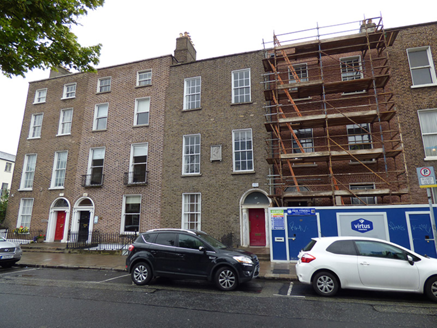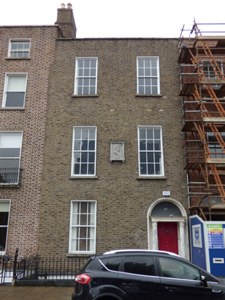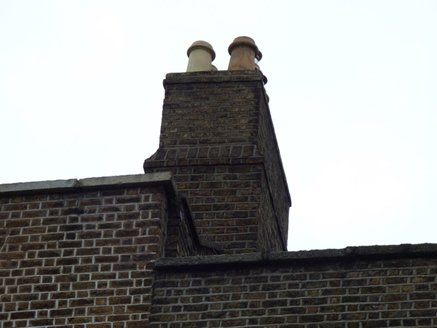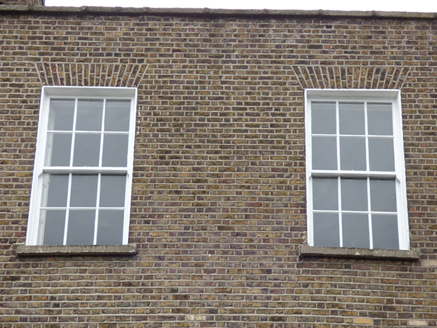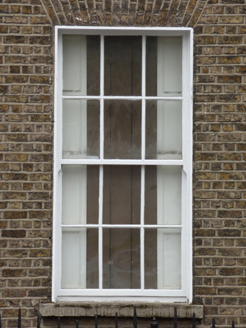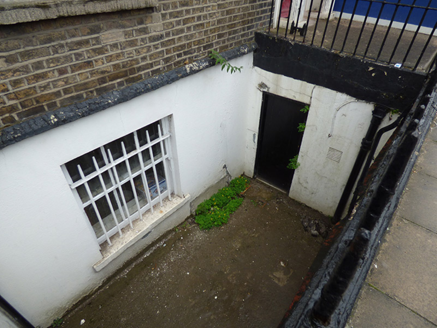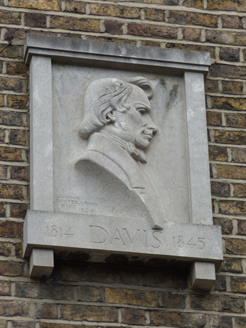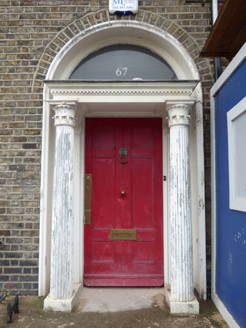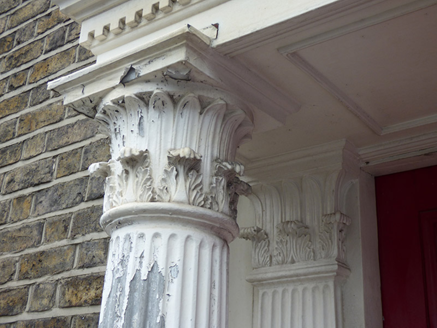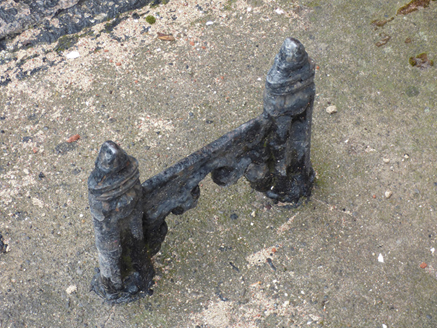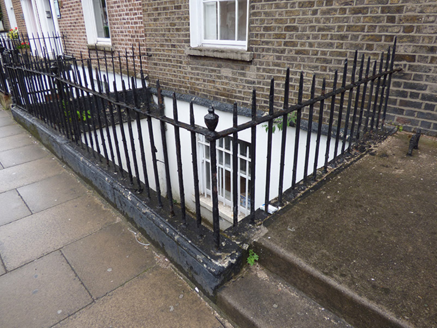Survey Data
Reg No
50100693
Rating
Regional
Categories of Special Interest
Architectural, Artistic, Historical
Original Use
House
In Use As
House
Date
1820 - 1830
Coordinates
316896, 233044
Date Recorded
29/07/2016
Date Updated
--/--/--
Description
Attached two-bay three-storey house over basement, built c. 1825, rear of building projecting from building line to each side, and with hip-roofed three-storey return to east end of rear. M-profile roof, hipped to east, behind parapet with granite coping, and having gabled dormer window to south slope of rear span. Brick chimneystacks to north party wall with terracotta pots. Concealed rainwater goods. Flemish bond buff brick walling to upper floors on painted masonry plinth course over smooth rendered basement walling; rendered walling to rear. Masonry wall plaque to first floor, dated 1945, with figurative relief carving and inscription 'Davis 1814-1845'. Square-headed window openings with painted rendered reveals and granite sills. Timber sliding sash windows, three-over-three pane to basement with wrought-iron grille, and six-over-six pane to floors above with angled horns. Timber sash windows to rear, east bay having six-over-six pane to top floor and tripartite nine-over-nine pane to first floor. Round-headed doorway with moulded reveals, doorcase comprising freestanding fluted Corinthian columns with matching engaged pilasters, entablature with dentillated cornice, plain fanlight, and six-panel timber door with beaded muntin and brass furniture. Cement-rendered entrance platform with decorative cast-iron boot-scrape and two steps to street. Basement area enclosed by wrought-iron railings with decorative cast-iron posts on painted moulded granite plinth; plainly detailed door opening beneath entrance platform. carparking to rear, with modernized two-storey rubble stone mews building to rear.
Appraisal
An early nineteenth-century house forming part of a row of similar buildings on the north side of Baggot Street Lower. It is characterized by well-balanced proportions, a good Corinthian doorcase and intact setting features, and is well retained, despite some loss of historic fabric. The property contributes to the architectural character of the area. The survival of the rubble stone mews enhances the setting at the rear. The building is of historical interest as the home of the writer and Irish nationalist, Thomas Davis, founder of the 'Young Ireland' movement and the newspaper 'The Nation'. He died here in 1845 from scarlet fever. Davis' association with the building is marked by the externally mounted plaque with a relief carving of the writer, by the sculptor Laurence Campbell, erected 1945 on the centenary of his death.
